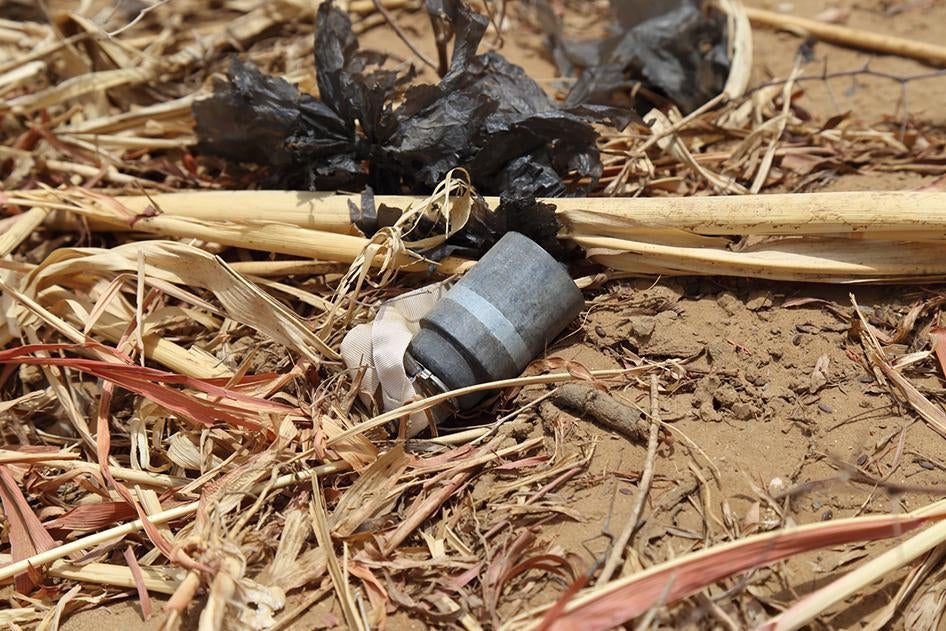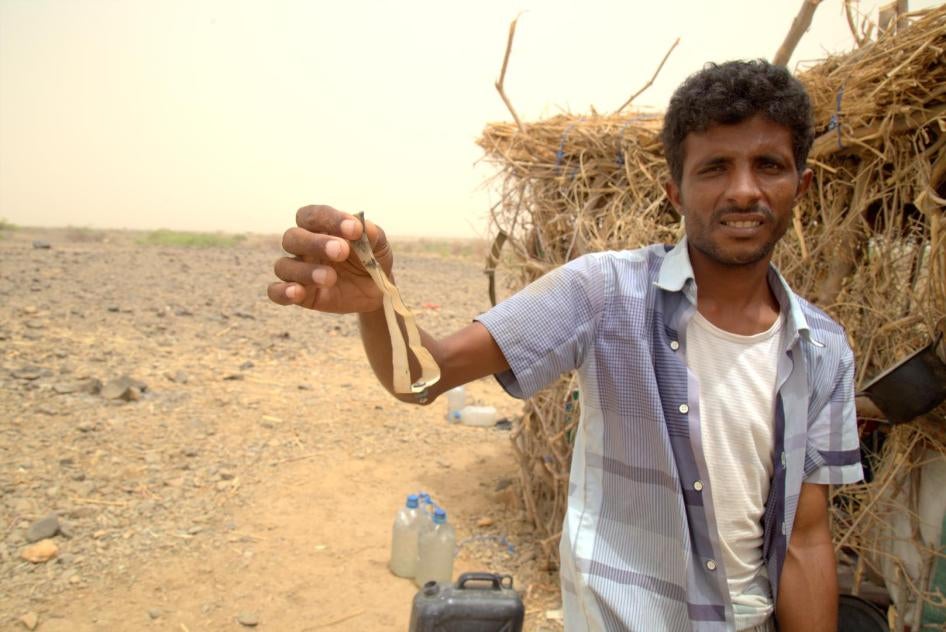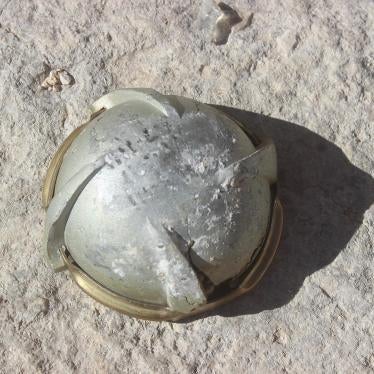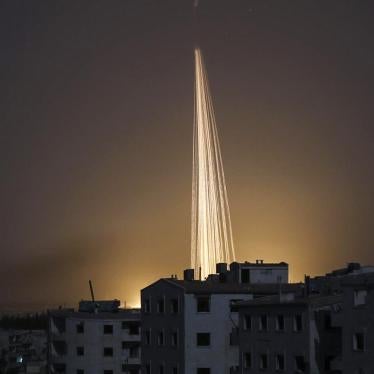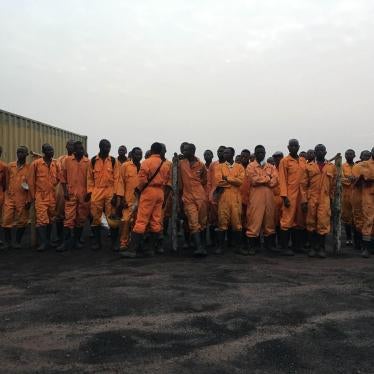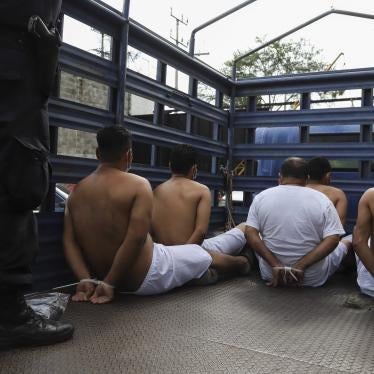(Geneva) – Cluster munition attacks in Syria and Yemen are causing unacceptable civilian suffering and deserve a strong response, Human Rights Watch said today during the release of the Cluster Munition Monitor 2016 report.
Between July 2012 and July 2016, Syrian government forces used at least 13 types of cluster munitions – most made by the Soviet Union – in more than 360 attacks. The actual number is most likely far higher, however. Cluster munition attacks on opposition-held areas of Syria have significantly increased since Russia began its joint military operation with Syrian forces on September 30, 2015.
Cluster Munition Monitor 2016 is the annual report of the Cluster Munition Coalition (CMC), the global coalition of nongovernmental organizations co-founded and chaired by Human Rights Watch. The group works to ensure all countries join and adhere to the 2008 treaty banning cluster munitions and requiring clearance and victim assistance. Currently, there are 100 states parties to the Convention on Cluster Munitions, while 19 countries have signed.
Cluster munitions can be fired from the ground by artillery systems, rockets, and projectiles, or dropped from aircraft. They typically explode in the air, sending multiple bomblets or submunitions over a wide area. Many fail to explode on initial impact, leaving dangerous duds that can harm, like landmines, for years to come unless cleared and destroyed.
Dirty Dozen:
A Selection of Submunitions that have Caused Civilian Harm in Recent Years
Graphic © 2016 Human Rights Watch
Photos from left to right: © 2015 Human Rights Watch. © 2015 Shaam News Network. © 2016 VICE News. © 2016 Amnesty International. © 2012 Private. © 2016 Private. © 2016 Human Rights Watch. © 2014 Private. © 2015 Human Rights Watch. © 2015 Baraa Abed al-Rahman. © 2015 Amnesty International. © 2011 Human Rights Watch.
In addition, Azerbaijan and Armenia have both accused the other side of using cluster munitions against civilians in the brief conflict over the disputed territory of Nagorno-Karabakh in April 2016. Both sides denied using cluster munitions.
The US has not signed the Convention on Cluster Munitions, but in May, the Obama administration suspended transfers of cluster munitions to Saudi Arabia after reports of their use in civilian areas in Yemen. Non-signatory state Brazil has not commented on evidence that the Saudi-led coalition has used Brazilian-made ASTROS cluster munition rockets in Yemen. The United Kingdom has questioned credible reports of the use of UK-made BL-755 cluster munitions by the Saudi-led coalition in Yemen. The UK transferred BL-755 cluster munitions to Saudi Arabia prior to the UK’s adoption of the Convention on Cluster Munitions in 2008.
There have been no confirmed reports or allegations of new use, production, transfers, or acquisitions of cluster munitions by any state party to the Convention on Cluster Munitions since it entered into force on August 1, 2010. However, Kenya, a signatory to the ban convention, denied an allegation that it used cluster munitions in Somalia in January 2016.
In the past year, France, Germany, and Italy have completed destruction of their stockpiled cluster munitions as required by the convention. During 2015, nine countries destroyed a total of 79,000 cluster munitions and 8.7 million submunitions under the convention.
According to Cluster Munition Monitor 2016, states parties destroyed nearly 1.4 million stockpiled cluster munitions containing 172 million submunitions through the end of 2015. This represents the destruction of 93 percent of all cluster munitions and 97 percent of all submunitions declared as stockpiled by the treaty’s states parties.
Croatia, Slovakia, and Switzerland are making significant progress in destroying their stockpiles, while Botswana, Bulgaria, Guinea-Bissau, Peru, South Africa, and Spain indicate that they plan to begin destroying their stocks, but have not started yet.
Every cluster munition destroyed from stockpiles is one that won’t take someone’s life or livelihood. Continued vigilance and progress are necessary to ensure that the convention’s excellent compliance record remains untarnished.
Arms Division Advocacy Director
The Cluster Munition Coalition recorded at least 417 new casualties from cluster munitions during 2015, including 248 in Syria and 104 in Yemen. The vast majority of casualties in Syria and Yemen occurred during cluster munition attacks. Significant casualties are expected from explosive cluster munition remnants, particularly unexploded submunitions, which first responders in Syria and local deminers in Yemen are working to clear and destroy on an emergency basis.
The use of banned cluster munitions in Syria and Yemen, and the resulting civilian casualties, has been met with swift public outcry and global media coverage. At the First Review Conference of the Convention on Cluster Munitions in September 2015, states parties adopted the Dubrovnik Declaration, which affirms, “We condemn any use of cluster munitions by any actor.”
In November 2015, the private company Singapore Technologies Engineering (STE) said it has ceased production of cluster munitions. Singapore has not joined the ban convention but already observes a moratorium on exports of cluster munitions. The Monitor will continue to list Singapore as one of 16 producer states until the government makes a formal commitment not to acquire any more cluster munitions.
The first United Nations General Assembly resolution supporting the convention to be adopted by a vote drew strong support in December 2015, passing by a vote of 139 to 2. All of the 40 countries that abstained are not part of the convention, except for Cyprus and Uganda, which have signed but not ratified.
Cuba and Mauritius are the most recent countries to accede to the Convention on Cluster Munitions.
“Countries that have yet to ban cluster munitions should revisit their position and stand in solidarity with victims of these weapons by making a commitment to join the international treaty,” Wareham said. “The question is not why, but why not join the sole international instrument specifically dedicated to ending the suffering caused by these weapons.”
